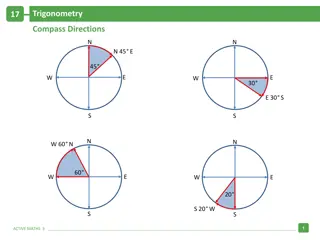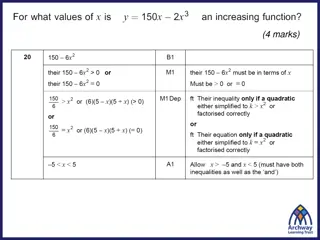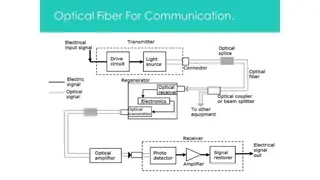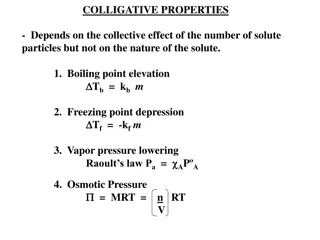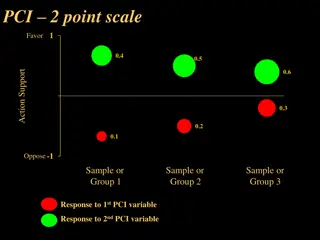
Exploring Comparative Contract Law in Academic Settings
Delve into the complexities of comparative contract law with a focus on common challenges, fundamental issues, and the limits of party autonomy. Understand the definition of a contract, what can be included or excluded, and the nuances of legal relationships in a global context. Join Prof.ssa Letizia Coppo on an academic journey through the intricacies of contract law.
Download Presentation

Please find below an Image/Link to download the presentation.
The content on the website is provided AS IS for your information and personal use only. It may not be sold, licensed, or shared on other websites without obtaining consent from the author. If you encounter any issues during the download, it is possible that the publisher has removed the file from their server.
You are allowed to download the files provided on this website for personal or commercial use, subject to the condition that they are used lawfully. All files are the property of their respective owners.
The content on the website is provided AS IS for your information and personal use only. It may not be sold, licensed, or shared on other websites without obtaining consent from the author.
E N D
Presentation Transcript
Comparative Law Prof.ssa Letizia Coppo Cattedra di Diritto comparato A.A. 2022-2023
COMPARATIVE CONTRACT LAW Common challenges of contemporary contract law Consumer protection and the protection of weaker parties (namely the users of platforms). Implementation of EU Directives and compliance with EU regulations (in European countries the most relevant areas of contract law are nowadays regulated by made-in-Europe legislation). Harmonization enforcement procedures. of substantive contract law and of Digitalization of contract law. 3 Universit LUMSA
COMPARATIVE CONTRACT LAW Fundamental issues of contract law What is a contract? What can and cannot be put into a contract? When can we say a contract is formed? What if one party s will was not entirely free or conscious? What are the effects of a contract? What if the parties have left gaps in the contract? What if some of the contract terms are ambiguous or unclear? How can a contract be enforced? What if the circumstances under which the parties entered into the contract have subsequently changed? When are the parties entitled to get away from the contract? 4 Universit LUMSA
COMPARATIVE CONTRACT LAW What is a contract? The agreement between two or among more than two parties to create, modify, regulate or extinguish legal relationships. Agreement = meeting of minds: is that still true? See the annex Is consideration necessary to qualify an agreement as a contract? Is the patrimonial nature of the performance necessary? Can a contract also be defined as the agreement between two or among more than two parties to transfer legal positions? Around those questions revolves the difference between contract, contrat and contratto. 5 Universit LUMSA
COMPARATIVE CONTRACT LAW What can or cannot be put into a contract? The common principle is party autonomy or freedom of contract (in its positive and negative meaning). Freedom to chose the other party Freedom to chose the content and type of contract or create new ones or import ones Freedom not to enter into a contract The question is what are the limits to freedom of contract. Public policy? Common decency/morals (bonnes moeurs)? Mandatory legal provisions? 6 Universit LUMSA
COMPARATIVE CONTRACT LAW What can or cannot be put into a contract? In civil-law countries the answer to all the abovementioned questions is provided by the civil code. The contract bounds the parties not only to what is written in it, but also to what comes from the legislation, from the duty of good faith and from customs and usages (contract supplementation). The code identifies and regulates the native types of contracts with lots of default provisions. What about common law countries? 7 Universit LUMSA
COMPARATIVE CONTRACT LAW The civil law and the common law approach In common law countries gaps are filled in by the judge on the basis of experience (precedents) or on the basis of what is reasonable in a certain industry (reasonableness or business judgement rule). The problem is that this increases uncertainty and unpredictability of the outcomes of litigation. Less for Anglo-American systems, where the main principle is the sanctity of contract , more for civil law systems, where among interpretative and supplementation criteria there is good faith and the judge is empowered to investigate the parties common intention on the basis of extra-textual and contextual elements. The problem is frequent: contracts circulate. See Third Party Litigation Funding. 8 Universit LUMSA
COMPARATIVE CONTRACT LAW The civil law and the common law approach The parties are encouraged to answer the above-listed questions themselves by providing specific contract terms for each of them. The result is a contract conceived as the legislation and the exclusive one of the relationship between the parties, that aims at being gapless, autonomous, self-regulating and self-sufficient, immune to whatever intervention of the judge (even if such a model of contract is utopistic). In practice, it is a lengthy contract, beginning with long preambles on the qualities of the parties (recitals) and includes not only rights and obligations, but also terms on the conclusion of the contract, on the interpretation and supplementation of the contract, on remedies and on the appropriate seat or procedure for claiming the remedies. 9 Universit LUMSA
COMPARATIVE CONTRACT LAW The common law contractual style: the recitals They do not just contain the description of the legal and factual history and premises that have lead to the conclusion of the contract, but also the reasons that have pushed the parties to enter into it or their personal or professional qualities or their experience in the industry concerned. Function: in general, to inform about the common intent of the parties in a time when there are no disputes on the interpretation of the contract and to clarify the object of the contract. 10 Universit LUMSA
COMPARATIVE CONTRACT LAW The common law contractual style: the recitals In particular, the preambles on the quality of the parties have the function: when they are in the obligor s interest, to prevent the other party from having too high expectations on the performance and the level of diligence in its execution, therefore to limit the obligor s liability (see the example of the cake designer); on the contrary, when they are in the obligee s interest, to set a high standard of diligence and clarify that even the slightest discrepancy from such standard will amount to a failure of performance and breach of contract and therefore entail liability. 11 Universit LUMSA
COMPARATIVE CONTRACT LAW The common law contractual style: the recitals Sometimes in the preambles there are terms by which the parties declare having mutually been informed in an exhaustive and transparent way of whatever relevant element for the conclusion of the contract. Function: in such case, the function of the clauses is that of excluding precontractual liability for defects of consent (fraud, mistake, duress) and prevent the parties from claiming for the avoidance of the contract. 12 Universit LUMSA
COMPARATIVE CONTRACT LAW Follows: the clauses on remedies Clauses that define the operational conditions of certain contractual remedies: reasonable and best efforts; hardship; risk and liability allocation clauses (force majeure and exemption or exculpatory or disclaimer clauses) Clauses identifying the applicable remedy: sole or exclusive remedy; renegotiation clauses. Clauses identifying the procedure for remedies: forum selection; choice of law; mediation clauses, arbitration clauses. 13 Universit LUMSA
COMPARATIVE CONTRACT LAW Follows: the clauses on contract interpretation and supplementation Four-corners, entire agreement, no-waiver: clauses preventing the judge from interpreting the contract in the light of extra-textual or contextual elements. clauses that prevent the judge from No-supplementation: supplementing the contract with sources that are external to the body of the contract or its annexes (like customs and usages, good faith, legislative provisions ). 14 Universit LUMSA
Prof.ssa Letizia Coppo Email: l.coppo1@lumsa.it lcoppo@univ-catholyon.fr






